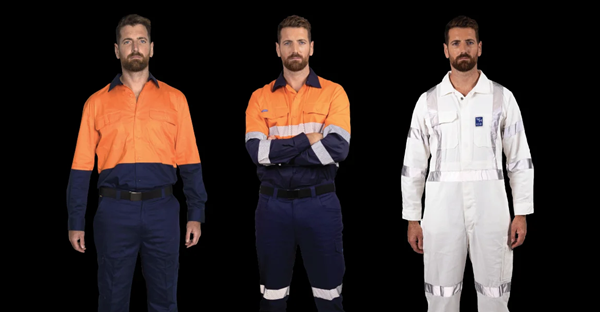Introducing Pink Personal Protective Clothing
Who would have thought over 90 years ago the first high-vis garment was born, unsurprisingly because of an industrial accident that inventor Bob...
While Australia, like the rest of the world, continues to evolve with its handling of the Covid-19 crisis, focus on economic recovery remains central to government planning. In the previous National Budget, delivered by Treasurer Josh Frydenberg in October 2020, it was announced the country is injecting $14 billion into new and accelerated infrastructure projects. New jobs will also be created, a further 40,000.
“Double hoop bio-motion tape on the arm and legs, is becoming a key requirement across the country. It offers additional visibility during active movement, day and night.”
Large infrastructure projects, such as road and rail building, tunnel construction and the creation of rail corridors, can lead to death and serious injuries on worksites. In 2019, 183 people were killed at work in Australia, and 72 percent of these fatalities were related to vehicles. In every workplace where there are vehicles and other moving machinery, it is essential that workers are visible at all times of operation. A key part of this is the use of high visibility workwear.
"Across Australia, most road and rail infrastructure operations use an X Back configuration on all high visibility workwear. However, it differs with Victoria Rail; the H Back is most commonly used, except for ‘shunting’ operations where the X Back is mandatory. Victoria Rail also requires all garments to be supplied in compliant orange; a ‘special purpose orange’, lighter in colour compared to other states,” says Drew Dauncey, Blackwoods Technical Safety Specialist.
“Double hoop bio-motion tape on the arm and legs, is becoming a key requirement across the country. It offers additional visibility during active movement, day and night."
While states and territories high visibility garment regulations vary to some degree, it is necessary for every employer and worker to understand and comply with the legal requirements in their jurisdiction. As a starting point, the AS/NZS 4602.1- 2011 (The use of garments for high-risk applications) provides a solid foundation of understanding. This standard includes three classes of high visibility outer clothing:
• Class D: For use outdoors only under daylight viewing conditions and including high visibility material that is either fluorescent or non-fluorescent.
• Class N: For use only at night when viewed under retro-reflective light and including retro-reflective strips that are at least 50mm wide.
• Class D/N: For both day and night use, and including fluorescent, non-fluorescent, and retro-reflective strips that are at least 50 mm wide.
The message is clear: BE SEEN TO BE SAFE.

Who would have thought over 90 years ago the first high-vis garment was born, unsurprisingly because of an industrial accident that inventor Bob...

No matter what time of the day, workers are susceptible to the dangers that arise during construction, roadworks, and related maintenance activities....